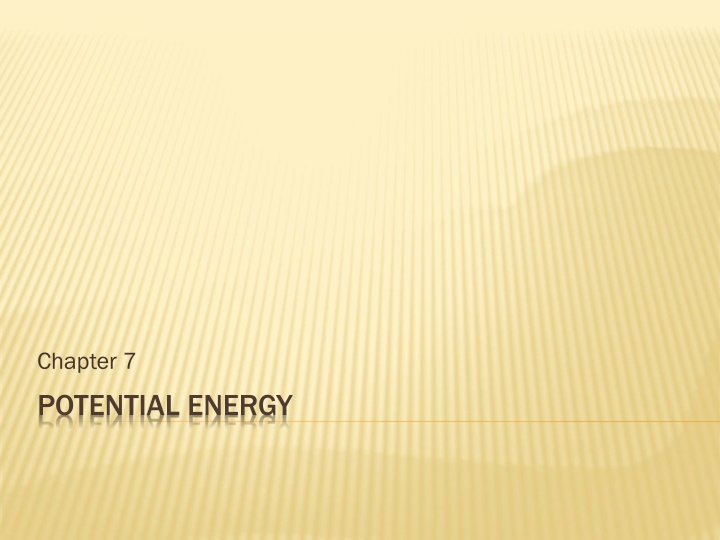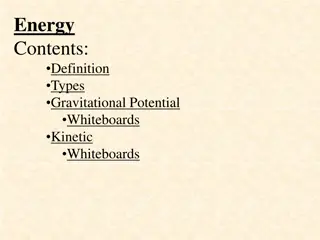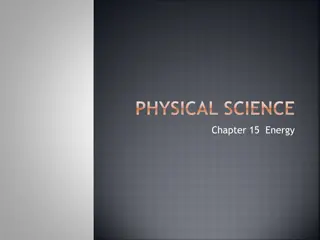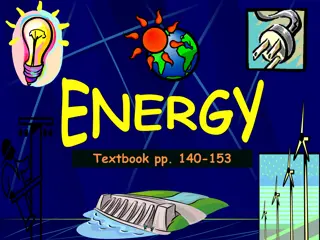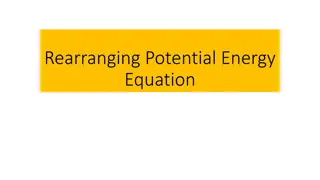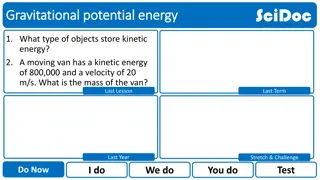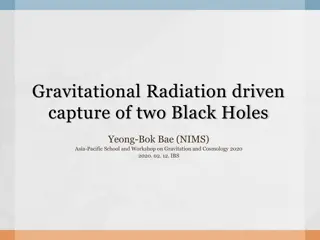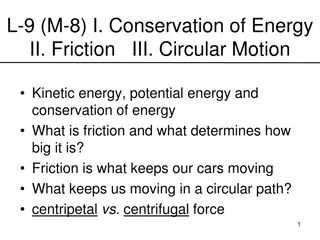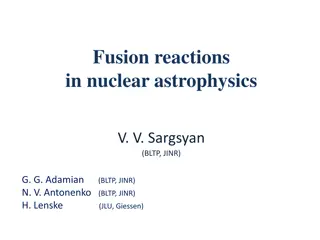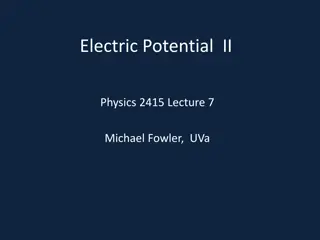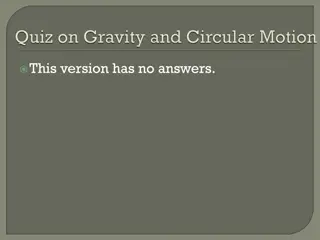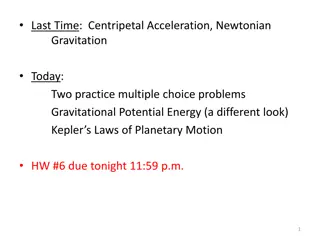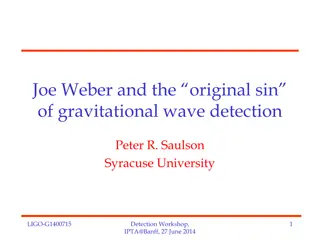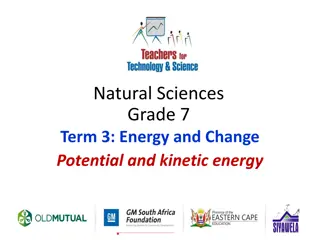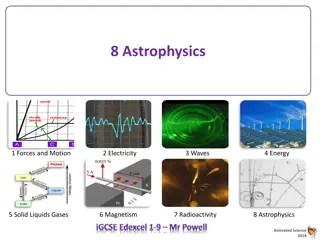Potential Energy: Gravitational and Spring Energies
Discover the concepts of potential energy through examples including gravitational potential energy, conservation of energy, roller coaster dynamics, pendulum behavior, and spring potential energy. Explore how potential energy transforms into kinetic energy in various scenarios, providing insights into the fundamental principles of physics and energy conservation.
Download Presentation

Please find below an Image/Link to download the presentation.
The content on the website is provided AS IS for your information and personal use only. It may not be sold, licensed, or shared on other websites without obtaining consent from the author.If you encounter any issues during the download, it is possible that the publisher has removed the file from their server.
You are allowed to download the files provided on this website for personal or commercial use, subject to the condition that they are used lawfully. All files are the property of their respective owners.
The content on the website is provided AS IS for your information and personal use only. It may not be sold, licensed, or shared on other websites without obtaining consent from the author.
E N D
Presentation Transcript
Chapter 7 POTENTIAL ENERGY
GRAVITATIONAL POTENTIAL ENERGY PE = mgh The higher you are, the more energy you have.
CONSERVATION OF ENERGY (NO FRICTION) KE1+ PE1= KE2+ PE2
CONSERVATION OF ENERGY What is the speed v of the ball at the bottom if the ball is released from rest? PEi= mgh, KEi= 0 PEf= 0, KEf=1 Ei= Ef PEi+ KEi= PEf+ KEf mgh + 0 = 0 +1 2mv2 2mv2 mgh =1 h 2mv2 2gh v =
EXAMPLE 2 If the ball is initially travelling at v0, what is the speed v of the ball when it is at h/3? Ei= Ef PEi+ KEi= PEf+ KEf mgh +1 PEi= mgh, KEi=1 PEf= mg(h 2 2mv0 2mv2 3), KEf=1 2=1 3mgh +1 2=1 2mv2 2mv2 2mv0 2 3mgh +1 2mv0 h 2+4 v = v0 3gh h/3
FIND THE FINAL SPEED PEi= mgh,KEi=1 2 2mv0 mgh +1 2=1 2mv2 2mv0 2+ 2gh v2= v0 v = 35.8m / s PEf= 0,KEf=1 2mv2
ROLLER COASTER A roller coaster slides down a frictionless track at height h with initial speed v0. Find the speed at A. PEi= mgh, KEi=1 PEf= mg(2R), KEf=1 Ei= Ef PEi+ KEi= PEf+ KEf mgh +1 2mv0 1 2mv0 v = v0 2 2mv0 2mv2 2= 2mgR +1 2mv2 2mv2=1 2+ mg(h - 2R) 2+ 2g(h - 2R)
PENDULUM Given m= 20kg,q = 20 ,L =1.5m, find the PE of the pendulum. The PE of the pendulum is mgh, but what is h? h + Lcosq = L h = L(1-cosq) = 0.0905m PE = mgh = mgL(1-cosq)=17.7J Lcosq h
POTENTIAL ENERGY IN A SPRING PEs=1 2kx2 k : spring constant [N /m] x : extension [m]
HOW FAST WILL IT GO? Given m=2kg, k =1.5N /m, x = -0.2m, find the speed v when the object left the spring. PEi=1 2kx2,KEi= 0 PEf= 0,KEf=1 2mv2 1 2kx2=1 2mv2 kx2 m v = = 0.17m/s
WF WORK DONE BY FRICTION (NON-CONSERVATIVE FORCE) KEi+ PEi+Wfriction= KEf+ PEf DE = Ef- Ei=DKE + DPE =Wfriction Remember Wf 0!!!
TWO POTENTIAL ENERGY? Later in Chapter 11, we will learn another equation for gravitational potential energy: PE = -GMm r The differecen between PE = mgh and PE = -GMm r PEG=mghis only true near the planet s surface (where g is a constant). Far away the gravitational field gets weak (where g gets smaller) and PEG=mghis no longer true.
